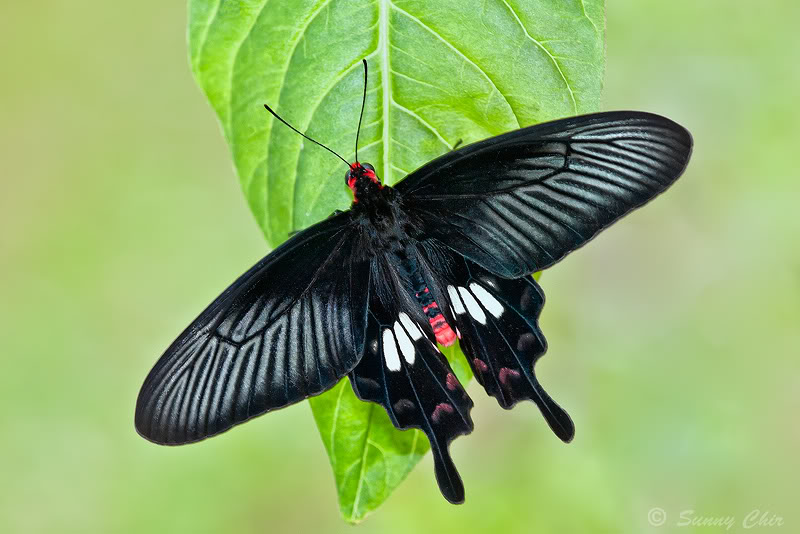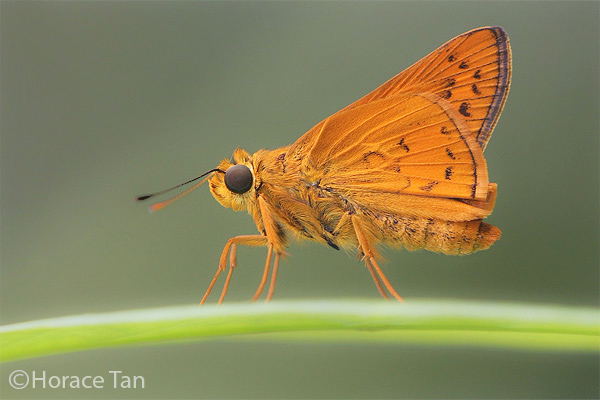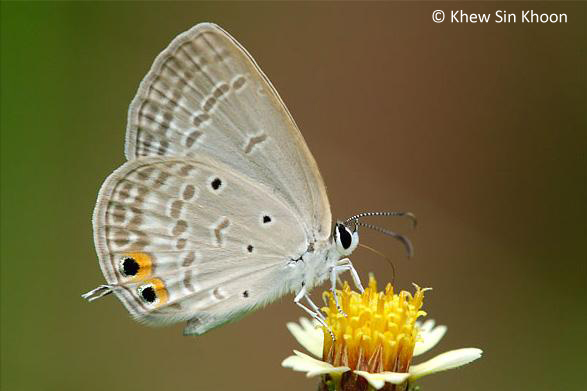New Butterfly Book Launched"Butterflies of Peninsular Malaysia, Singapore & Thailand"![]() ButterflyCircle members with Dr Kirton
ButterflyCircle members with Dr KirtonDr Laurence G Kirton's latest book in the Naturalist's Guide series, entitled "Butterflies of Peninsular Malaysia, Singapore and Thailand" was finally launched on 24 Apr 2014. We had earlier had a
sneak peek at the book which started some time back in 2011.
![]()
After some months of planning for the launch, which included inviting the intrepid Prof Leo Tan to be the Guest of Honour, deciding on the venue and guest list, the book launch finally happened at 5pm at the Education Room at Singapore's latest garden attraction, the Gardens by the Bay.
![]() Dr & Mrs Kirton at the tulip display, Flower Dome
Dr & Mrs Kirton at the tulip display, Flower DomePansing Distribution Pte Ltd, the Singapore based distributor of John Beaufoy's books, was the organiser and sponsor of the book launch. The day started with a delicious lunch at the Peach Garden Restaurant with Leslie Lim (of Pansing), John Beaufoy, Dr and Mrs Kirton and me. It was a pity that Ken Scriven was unwell and did not manage to make the trip to Singapore from the UK.
![]() An overview of the Flower Dome
An overview of the Flower DomeIt was nice catching up with old friends, especially with Laurence and his wife, who last visited Singapore to give
a talk to ButterflyCircle in 2009. After lunch, we took the opportunity to visit the Flower Dome and Cloud Forest conservatories. As with many first-time visitors to GB, our guests were wowed by the botanical display in the airconditioned domes. The current display in the Flower Dome featured 50,000 tulips that were air-flown all the way from their native home in the Netherlands.
![]()
![]()
![]()
All too soon, it was nearly 4pm and Leslie herded the group out of the domes to prepare for the launch and arrival of the guests to the book launch. It was a gathering of "greenies" and old friends as the guests started streaming in. Amongst the prominent conservationists and environmental champions were people like Ria Tan, Subaraj, Joseph Koh, Prof Peter Ng, Geoff Davison, Lena Chan, Grant Pereira, Dr Wee Yeow Chin and many others. We also had many overseas guests like Joseph Goh and his team from the Penang Butterfly Farm and Gary Ruben who made the trip all the way from Langkawi.
![]()
Our Minister of State for National Development, Desmond Lee turned up to give his full support for the event. Prof Leo Tan, always energetic and with a warm smile, was mingling amongst old friends in the Education Room. ButterflyCircle members turned up in full force, as a total of 25 members from Malaysia, Singapore and Thailand contributed about 75% of the photographs in Dr Kirton's book. A group from the Tampines-Changkat Butterfly Interest Group also turned up to support the event.
![]() John Beaufoy gives his speech
John Beaufoy gives his speechAfter a welcome speech by Leslie, who reminded everyone that the launch was meant to be an informal one, and everyone should relax and have a good time, the publisher John Beaufoy, gave an anecdote-filled speech about how the book came into being.
![]() Prof Leo Tan, our Guest of Honour, sharing his anecdotes about butterflies
Prof Leo Tan, our Guest of Honour, sharing his anecdotes about butterfliesOur Guest of Honour, Prof Leo Tan, always an accomplished orator at such events, captured the audience with his interesting experiences and peppered his speech with his wit and humour.
![]()
![]() Dr Kirton presenting some interesting facts about butterflies of Southeast Asia, and the attentive audience
Dr Kirton presenting some interesting facts about butterflies of Southeast Asia, and the attentive audienceDr Kirton then had his moment, as he shared his story of how the book came about. It was an interesting presentation about the butterfly species in the three South East Asian countries. Dr Kirton also shared the rationale for the retention or changes to the taxonomic naming, and more interestingly how he arrived at the common names for the featured butterflies in his book.
![]()
![]()
![]()
Whilst the Latin taxonomic names are generally used by scientists and entomologists and generated less controversy, the English Common Names often varied from country to country, and many species are referred to by more than one common name, or conversely, one common name may be used for two different species. Dr Kirton explained his criteria and rationale for the changing of, or retaining some common names of butterflies.
![]()
![]() Dr Kirton autographing his book for his fans, who queued up patiently for their turn
Dr Kirton autographing his book for his fans, who queued up patiently for their turnAfter his presentation, the audience quickly queued up as Dr Kirton obliged by autographing his book. It must have been hard work for him, as he carefully penned personalised messages to his fans. It was a fun time of chatting and catching up with friends and making new ones, and the organisers, Pansing Distribution threw in a mouth-watering buffet to boot.
![]()
All in all, it was a very fun and successful book launch, and everyone went home happy, holding on to the latest book on butterflies in the region.
Text by Khew SK : Photography by Huang CJ, Anthony Wong & Khew SK
Special appreciation and thanks to :- John Beaufoy Publishing
- Dr & Mrs Laurence G Kirton
- Pansing Distribution Pte Ltd - especially to Leslie, Sasha and Samantha for the liaison work and sponsorship of the event
- Gardens by the Bay - for the complimentary use of the Education Room for the launch - especially to Dr Tan Wee Kiat, Kenneth Er and Ms Peggy Chong
- Guest of Honour, Prof Leo Tan
- Minister of State (National Devt) Desmond Lee for joining in the fun
- ButterflyCircle members who turned up in full force to support the event
- Friends and guests who shared the wonderful evening with us
![]()


































































































.jpg)




.jpg)
















































































